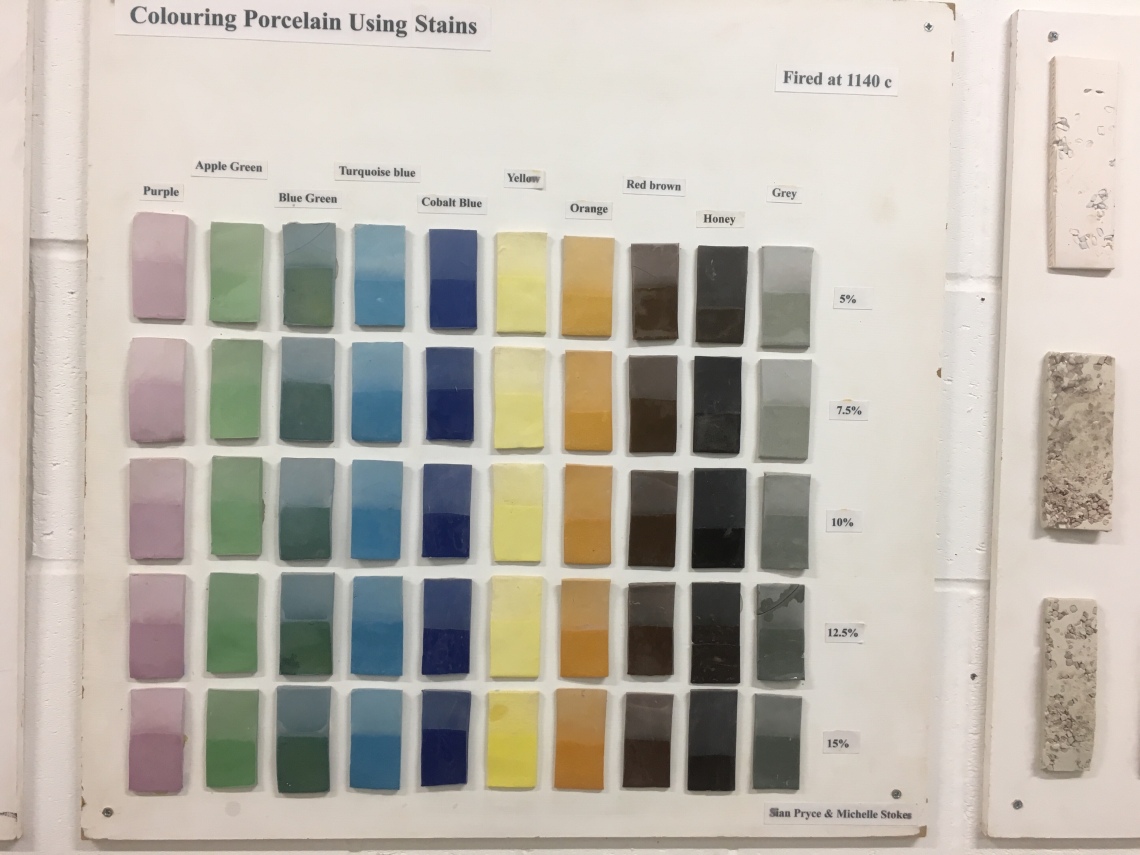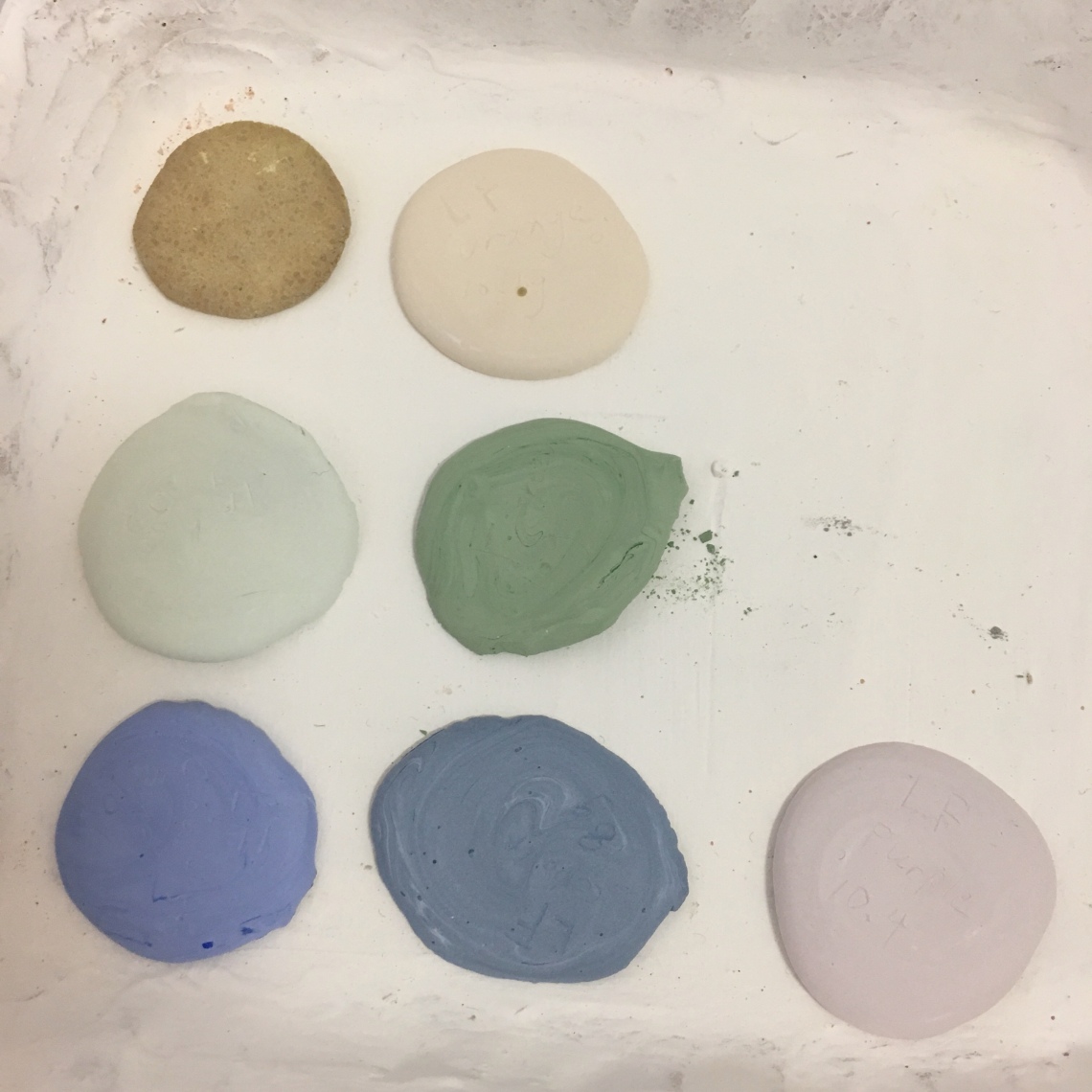I began with the velvet underglaze that I bought online. I did the same thing as I did in field, mixing colours to create a gradient. Ihe underglaze works well as the colour won’t change after firing. However, the transparent glaze didn’t reach the temperature, so it didn’t competely melt. Firing temperature was 1060c.


Then I want to explore coloured clay. I referenced the board downstairs which is very useful. Without clear glaze, the colours look pale. Many people have done a lot of coloured clay tests before, I read the book called Additions Clay Body, and the information online, it will be very helpful to look at.

I started with LF casting slip, colourant (vanadium,rutile, orange stain, mid-green stain, green stain, cobalt blue stain, cobalt oxide, purple stain). The image below are the test tiles after fired(1100c). 
Later, I began exploring porcelain with colourant. Different from mixing LF slip with stain, I mixed stain with a bit of procelain slip and then add coloured sip into procelain wet clay. It’s not neccessary for me to do test scientifically, I don’t pursue the exactly same result. I made green, yellow, sky blue, cobalt blue, dark blue clay, terrecotta for orange, brown, procelain for white, crank for warm sand colour.
Then I blened different colours together, which resulted like this (bone dry state).
These are the test tiles of colour slip from Morgan and Kajsa who have been working with colour slip for a long time. They are expert on colour slip. I mixed them with engobe that I made before. The colours are more vibrant with the clear glaze from Morgan. I really like this clear glaze, look like a glass.
Conclusion: I need to fire the colour porcelain to see the result. Test some transeparent glazes.



